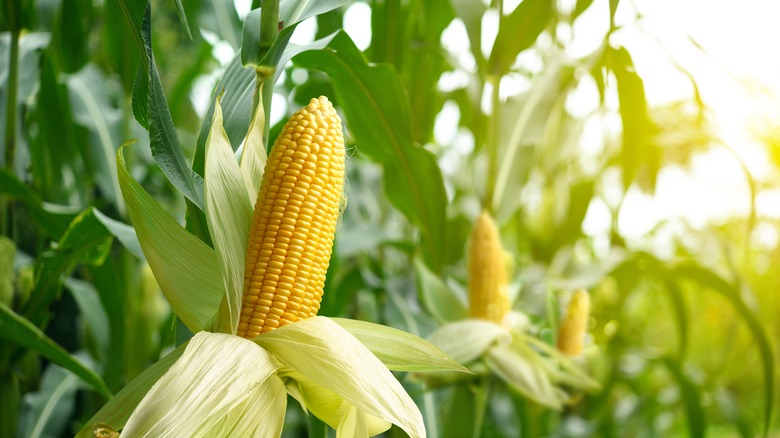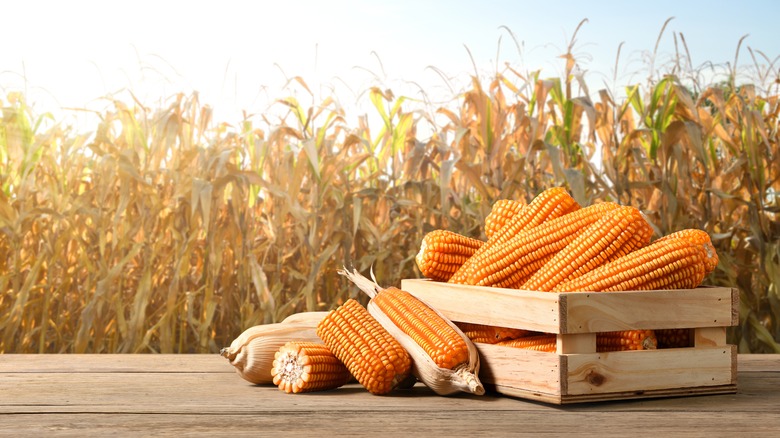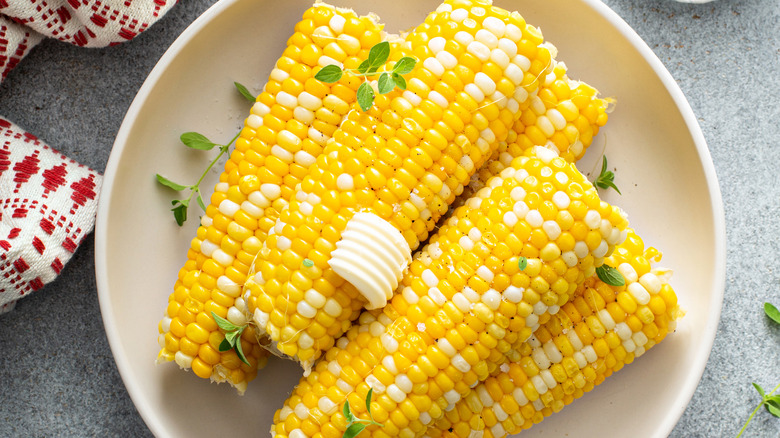Maize Vs Corn: Is There A Difference?
When you're strolling down the aisles of a store, you will surely find that corn pops up in a staggering selection of products (and not just popcorn). In 2022, the United States alone used nearly 12 billion bushels, the most in the world, per Statista. Despite its ubiquity, there is still some confusion over what to call the crop. Do you chow down corn on the cob or munch on maize? More importantly, is there even a difference between them?
Ultimately, maize and corn are the same crop, and the two terms only represent discrepancies in the way the English language is used around the world. In the United States, corn is the most commonly used word, while most other English-speaking nations call it maize. Both words have existed for some time, and though maize is closer than corn to what the crop was originally called, the word corn is sometimes used to specify the crop's food uses in countries that opt to call the crop maize.
Where we get the word maize
Corn has a fascinating ancient history in the Americas. The earliest iterations of the crop are believed to have popped up in parts of what is modern day Mexico, and it was cultivated by Native Americans for thousands of years before European colonization. The Taíno (native Caribbeans) called the crop mahiz, or rather, this was the term Columbus jotted down in his journal. It would later become cemented as a name for the plant when a scientific name was settled on — Zea mays. In Europe, maize (or a cognate thereof) is the word of choice, and you can trace this back through the history of the continent.
The term corn, on the other hand, has a more modern etymology. Korn isn't just a metal band, it's also the Germanic basis for the word corn, which in turn is derived from kurman, the German word for grain. This catchall term could actually be a better fit for corn's modern multipurpose form.
More details surrounding corn and maize usage
Nowadays, corn/maize can be found in a staggering selection of items, and it can range in form from the bright bits in a bag of frozen veggies to the sweetening syrup in cans of soda. Of course, there's corn syrup, but corn is used to make ethanol, a form of fuel, and it also appears in both medicines and cleaning products. Whether it's called corn or maize, most of the crop (around 40% in the U.S.) is actually consumed by livestock. Only a sliver of the U.S. corn crop is ever chomped on by people: Sweet corn represents less than 1% of the whole harvest — corn used for animal feed and industrial purposes is often called commodity corn.
The actual difference between corn and maize is confined to the linguistic realm, and there is some crossover between the two terms. In the United Kingdom, for example, if you use a genius hack to butter a bunch of corn, you might refer to the yellow, butter-bathed pile on your plate as corn, as this word is commonly used to differentiate between corn's industrial iterations and its use for food. However, you'll still buy bottles of maize syrup at the store in England. Whatever you call it, the crop has become a staple of the modern world, so this linguistic discrepancy is here to stay.


